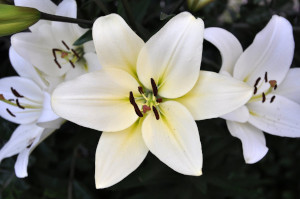A number of plants are poisonous to pets. These can cause serious illness and even death in some cases. It’s important to check the safety of any plants before your pets have access to them. If you’re unsure about the safety of a particular plant, talk to your veterinarian for advice.
The following links provide useful information:
- The Australian Animal Poisons Helpline provides information on substances that can be toxic to pets, including plants. They are a registered animal charity and provides a free service to pet owners including rapid up-to-date first-aid advice, risk assessment and triage recommendations to pet owners who may be dealing with a poisoned animals.
- The US animal welfare organisation ASPCA runs a national Animal Poisons Control Centre for pets that lists toxic and non-toxic plants. Data includes information on the known effects of each toxic plant.
- The University of Illinois Veterinary Medicine Library shares a handy database of plants toxic to animals. This includes photos and detailed descriptions of the effects of the plants on animals, both small and large domesticated species.
- Cornell University has developed an extensive Poisonous Plants database. It is searchable by botanical or common plant names and lists the types of animals affected, including livestock.
- The CSIRO published an eBook in May 2020 by veterinary toxicologist Dr Ross McKenzie ‘Australia’s Poisonous Plants, Fungi and Cyanobacteria, A Guide to Species of Medical and Veterinary Importance’.
An example of data available on plants known to be poisonous to pets
Lilies
All parts of the plant are highly toxic to cats and mildly toxic to dogs. A tiny amount ingested by a cat can result in kidney failure within 12-36 hours – seek veterinary care as soon as possible.
Scientific Names: Lilium, Hemerocallis
Common Names: Asiatic, Easter, Japanese Show, Rubrum, Stargazer, Red, Tiger, Western, Wood, Day
Toxin: unknown
Signs: vomiting, diarrhoea, abdominal pain, deceased appetite, lethargy, excessive thirst


